Australian Convict Sites
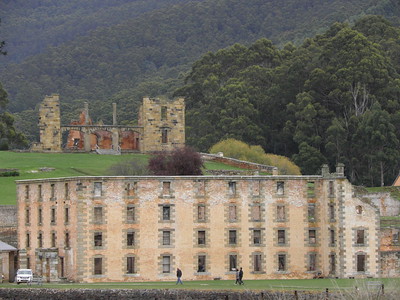
The Australian Convict Sites comprise the remains of settlements to which British convicts were migrated by force.
The transportation and associated forced labour was a legal form of punishment in the 18th and 19th centuries. It also led to an influx of European colonists to the detriment of the Aboriginal peoples. The sites include 11 different types of structures, ranging from prisons to factories and mines.
Community Perspective: The sites lie mostly around Sydney and on Tasmania; Shandos has given an overview of them all. Reviews so far have included Port Arthur (Els), Cockatoo Island (Tom), Kingston and Arthur`s Vale (John), Hyde Park Barracks (Jay), Brickendon and Woolmers Estates (Clyde), and Old Governor's House (Nan). The interpretation at some of the sites is rather poor.
Map of Australian Convict Sites
Load mapCommunity Reviews
DannyB

In April 2022, we finally ticked off all the 11 Individual Convict sites that make up the 1 UNESCO site across Australia with a number of individual trips over the last 2 years. It is funny how COVID made me prioritise our own UNESCO sites due to travel restrictions. Probably the least inspiring of the 11 is the remnants of the Convict Road northwest of Sydney, however made a lovely road trip in the region. Sydney area has a grouping of 4 sites, Fremantle 1, 5 across Tasmania and 1 in Norfolk Island. I found the sites in Tasmania more interesting, however the site at Norfolk Island was amazing. Each of the sites are easily visited with a variety of tours available. My favourites to visit were the Kingston and Arthur's Vale Historic area on Norfolk Island, Darlington Probation Station on Maria Island (TAS) and Port Arthur (TAS).
Shandos Cleaver

Growing up in Australia, one of the main subjects of our history classes were convicts. Nearly all of the Australian state capitals were firstly settled by Europeans as convict penal settlements, the destination for criminals sent from England during the late 18th and early 19th centuries. It's hard to understand the reasoning behind this decision these days (at the time it was a six month plus voyage!) Regardless, it led to the colonisation of Australia by Britain, and many white inhabitants of the country (myself included) can trace their roots to convicts.
Due to the number of convict settlements scattered around the country, it's only fitting that the locations for this WHS are also scattered around the country. After visiting the majority of the 11 locations, these are my thoughts:
Hyde Park Barracks: One of the easiest sites to visit, this site is centrally located in Sydney and just a short walk from the separately listed Sydney Opera House WHS. This grand building was one of the earliest permanent buildings constructed in the colony and was where my great great great grandfather firstly stayed on his arrival. I've visited multiple times. The new immersive experience is a little glitchy, but currently free (usually ticketed).
Cockatoo Island: If visiting Sydney, this island located in the harbour is also relatively easy to visit, just a short ferry ride from Circular Quay, next to the Opera House. Just be warned the ferries aren't that frequent and stop rather early - especially if you want to continue on to Parramatta! I've visited in the past for art and music festivals, but on our most recent re-visit I hired the paid audio guide, although there's also plenty of signs. Just one part is convict related, but the shipyards are also intriguing. Entry is free.
Old Government House and Domain: Don't get this location in Parramatta, a 30 minute train ride (or up to 90 minute ferry ride) west of the city mixed up with the current Government House in the city. These days called Parramatta Park, the Old Government House is the most interesting part of the location. It's open multiple days per week with ticketed entry. At the far end of the park, there are infrequent paid tours of The Dairy. The tentative Old Female Factory site is just across the river from this part of the park.
Old Great North Road: The final location on the outskirts of Sydney is only accessible by car, taking the ferry across at Wiseman's Ferry. Turn left after the ferry and park for the Old Great North Road. You can walk up to a 9km loop, a great bush walk, but I've also just walked the first section of the walk, where the most visible remnants of the old convict-constructed road remain.
Port Arthur Historic Site: Out of the locations that I've visited, I'd pick this as the most outstanding location. Port Arthur was a self-contained penal colony in Tasmania and is arguably the best preserved convict remains in Australia. It's about an 80 minute drive from Hobart and can be visited as a day trip, but I recommend an overnight stay for a more in-depth visit. Tickets are valid for two days, but one long day is a good amount of time.
Coal Mines Historic Site: If staying overnight at Port Arthur, you'll also have time to visit the nearby Coal Mines Historic Site. While not as interesting as Port Arthur, this site still has some atmospheric remains and you'll generally have it to yourself. Entry is free.
Darlington Probation Station: This location is located on Maria Island, off the east coast of Tasmania, to the north of Port Arthur. I still haven't visited this location. (Keep an eye out for the wombats, as well as the historic remains!)
Brickendon and Woolmers Estates: Both of these sites are located in northern Tasmania, almost adjacent to each other. They are examples of the kinds of farm estates where convicts were sent to work, so the convict aspect isn't as central. We only had time to visit Woolmers Estate, with a guided tour of the house. While interesting, it doesn't give as great an insight as Port Arthur.
Cascades Female Factory: Back in Hobart, we only visited the exterior of this site, arriving after it had closed for the day. Not much remains of the building, but I've heard the audio guided tour is great.
Fremantle Prison: The only location in Western Australia, this former prison is located in the port city of Fremantle. We only visited the exterior and the free exhibits inside, as we were with our dog (who wasn't allowed in). Make sure you select the Convict Prison Tour, as other tours focus on the more recent history - it was still used as a prison up until 1991, despite the 19th-century conditions!
Kingston and Arthur's Vale Historic Area: This location is on Norfolk Island, an Australian territory a few hours flight off the east coast, which I still haven't visited.
If you're just wanting to visit one location, probably the best option is Port Arthur in Tasmania. Tasmania is also the location of the impressive Tasmanian Wilderness WHS. While in Tasmania, it's easy to also visit a few other locations on the island.
The other main option is to visit this site in Sydney, at the same time as visiting the Sydney Opera House and the Blue Mountains WHSs. The easiest option is Hyde Park Barracks, but it's also fairly easy to visit Cockatoo Island or Old Government House in Parramatta.
Nan

On a brief stopover of three days before NYE 2020, I visited the Convict Sites around Sydney. The day I arrived, I was off to a splendid start, as the Hyde Park Barracks were undergoing renovations (should be completed by now / Summer 2020), so I only got some outside glimpses. Then, two days later on NYE, we took the boat to Cockatoo Island which ... was closed the whole day in preparation for the NYE party. My last chance was the Old Governor's House in Parramatta.
When I arrived it was awfully quiet and signs on the lawn were announcing that the Parramatta NYE party later that day was cancelled. The place looked desolate and I was acutely worried to find yet another closed site. And indeed, the museum was about to close due to low attendance. Luckily, they hadn't yet, so I got a mostly private tour. Later a few more tourists dropped in.
The tour guide painted a clear picture of the site. It's a simple home, nothing that would go for an estate in Europe at the time. The interiors are simple and certainly not luxurious. Australia was a poor, remote colony. Being governor of Australia was either a stepping stone for a young ambitious official or a retirement option for officials past their prime. And of the settlers, as the site name tells you, most came involuntarily as convicts.
Initially, the estate served agricultural purposes. There wasn't much food to go around, even for the governor, as the seeds brought from the Northern hemisphere wouldn't grow in Australia due to the different seasons. Food was rationed and locked away. And they tried to make ends meet somehow.
I had a few misconceptions who the convicts were that the guide managed to clear up. There were women as many prostitutes from the UK were send to Australia. And many convicts were political convicts, e.g. Irish agitators, not murderers. As a whole, the sites tell an interesting story of Australia as a different type of immigration country.
Getting There
Looking at the site, you can group the sites into four clusters:
- Tasmania
- Remote island in the Pacific
- Perth
- Sydney
Of the four, the easiest to tick off (and the only parts I visited) are in and around Sydney in New South Wales.
The Hyde Park Barracks are downtown and in walking distance of the major tourist sites. From Circular Quay you can take a ferry to Cockatoo Island with the added benefit of getting a cheap harbour cruise. The same boat continues up the river to Parramatta for the Old Governor's mansion. The boat is rather slow, so I would take the train back. Interestingly, there are periods where the water is too low to reach Parramatta proper and you have to take bus for the last leg. Trains between Parramatta and Sydney run frequently and you can walk from the station to the mansion.
While You Are There
Sydney, obviously. Parramatta has some colonial buildings and comes recommended by guide books. Personally, I found it rather underwhelming, but it helps making the point that Australia was not a rich colony. Parramatta is also a stop on your way to the Blue Mountains.
Clyde

I visited this WHS in January 2018. Of the 11 inscribed sites, 5 are scattered around Van Diemen's Land (Tasmania). Port Arthur and the Cascades Female Factory are the ones which attract most crowds as they cater for cruise ship tours and are among the closest to Hobart too. The highlight sites in Tasmania were the Brickendon and Woolmers Estates. While in Sydney we bought the Sydney Museums Pass, took a ferry to Cockatoo Island and then allowed around 2 hours to visit the Hyde Park Barracks Museum (just a short walk from the Sydney Opera House).
Reading up prior to visiting this WHS will certainly help to better understand and appreciate its national importance and perhaps its OUV. During the 80 years between 1787 and 1868, some 166,000 men, women and children were transported to Australia as convicts. This mass shift of population or forced migration to Australia was part of a global phenomenon associated with the punishment of crime, in this instance controlled by the British government. This phenomenon, known as convictism, dates back to the early 17th century and occured in many parts of the world with Britain, France, Spain, Portugal, the Netherlands, Russia and Argentina all transporting criminals to locations across the globe.
In Australia today there are more than 3000 convict sites remaining, all representing different aspects of convictism. However, the 11 inscribed sites are considered to be outstanding examples of convictism in Australia. They spread from Freemantle in the west to Norfolk Island in the east, from the middle of New South Wales to the depths of Tasmania's south. If I were to choose one site out of the 7 we visited to have a general overview of this WHS, I'd recommend visiting Hyde Park Barracks Museum. It is a unique museum and the building itself should be regarded as a museum of itself, directly related to its historic uses.
Conditions in Britain led to a huge increase in the number of convicts sent to the colony after 1815. Built to hold 600 men, at times the Barracks housed up to 1300 people. Many traces of convict life remain. Inked into shipping ledgers and court records are minute personal details of men, women and children - their scars and tatoos, names and aliases, crimes and sentences. But there are also stories of opportunity, new lives and family. Most convicts served their sentences and blended into society as 'free' citizens.
They carried out every type of task from skilled trades to labouring. They loaded ships and carted cargo, repaired tools and boats, cut and rolled logs, built dwellings and made clothing. Some were assigned to work for the government and slept in barracks and dorms like the one in Hyde Park (left photo) while others worked and lived in homesteads like the ones in Tasmania (right photo) under a private master or mistress. In 1849 the last convicts were removed from the barracks and incarcerated on Cockatoo Island in Sydney Harbour (easily reachable from Circular Quay Terminal). Convicts were sent to Tasmania until 1853 and the final convict vessel landed in Western Australia in 1868. Nowadays it is estimated that one in ten Australians has a convict ancestor.
The Brickendon and Woolmers Estates were established in the early 1820s by the combined labours of convicts and their masters. These are easily reached by rental car from the Heritage Highway and are a very pleasant stopover to/from Cradle Mountain National Park. You can actually sleep in both of them and have the places for yourself before/after visiting hours (closed on Mondays). Even though I haven't visited Sweden's decorated farmhouses, from what I've seen/read online, the experience is rather similar with an idyllic agricultural/natural setting. For me it was a convenient stop to leave early in the morning to visit Cradle Mountain National Park, but also an interesting way to appreciate the two opposite kinds of relationships between the convicts and their masters - one of floggings and brutality, the other (here) of mutual tolerance and shared labour. Make sure to ask for a combined ticket if you intend to visit both sites. A new interpretation centre is being built near the Woolmers Estate and it is worth going for a walk from the pump house and windmills to the national rose garden.
John booth

This year I visited the 11th of the locations included in this WHS, the Fremantle Prison. Fremantle is connected by rail to the city of Perth WA.
The property is only accessible on a conducted tour, which takes you to the cells, kitchens, chapel, and exercise yards.
Gary Arndt

I visited the site in February 2012. In particular, I visited Cockatoo Island, The Hyde Park Barracks, and the Old Government House. The Sydney area locations are pretty easy to visit, especially the barracks.
View my complete review of the Australian Convict Sites on my website.
Jay T

The Australian Convict Sites are a testament to the significant role British prisoners made in shaping the country. Intrigued by Australian history, I visited two of these sites in June 2012: Hyde Park Barracks in Sydney, and Fremantle Prison, in Western Australia. Between 1819 and 1848 Hyde Park Barracks housed convicts who were deemed serviceable for government employment, and the excellent museum and dormitories tell their stories. The barracks also housed a courtroom to judge convict/employer disputes with prisoners working throughout the colony. In Western Australia, prisoners were used as free labor to build the colony -- and their prison. Although the guards had nicer quarters outside what is now called Fremantle Prison (see photo) the cell blocks were more austere. The museum at the entrance explained everyday prisoner life here well. At both sites a well-behaved convict worked for the day he or she received a Certificate of Freedom, allowing them to stay and settle in Australia or leave the colony; many did stay, leaving their imprint on early Australian life. I highly recommend a walk through history at at least one of the inscribed sites when in Australia.
Logistics: Hyde Park Barracks is in the heart of Sydney, not far from the St. James railway station on the City Circle line. Fremantle Prison is in downtown Fremantle, a short walk from the city train station.
John booth

It is at the convict sites in Van Diemens Land (Tasmania) that you hear the gory stories of murders, floggings and isolated incarceration of convicts at the hands of the British gaolers. Neither men, women nor children were exempt.
Port Arthur convict site covers a huge area, but the first day I visited a cruise ship was in port and thousands of passengers were thronging the site. The following day however I had the whole site almost to myself. An interesting part of this site was the Dog Line, a line of chained mastiffs that guarded the site at the narrow isthmus of Eaglehawk Neck.
The Coal mines were another site where convicts, especially children were forced to toil for hours in subterranean shafts and galleries.
Darlington on Maria Island was home to repeat offenders where attempts at rehabilitation were made.
The Woolmers and Brickendon Estates near Longford were both established as sheep stations on behalf of private owners using convict labour.
The integrity of the Womens' Prison at Cascades in Hobart is very limited, and I find it hard to understand why this property made its way onto the WHS list. Especially as what I consider more deserving cases like Sarah Island in Macquarie Harbour and the Richmond Gaol were omitted.
John booth

The New South Wales convict sites are at a variety of locations, but none as gruesome at those in Van Diemens Land (Tasmania) or Norfolk Island.
The Hyde Park Barracks are easiliy accessible, being opposite the St James station.
The Old Government House at Parramatta is accessible from Sydney's Circular Quay either by train of by ferry. A loop bus in Parramatta links the station, ferry wharf and the site in Parramatta Park. The buildings were constructed by convict labour under Governor Macquarie, and housed the first 10 Governors of the Colony.
Cockatoo Island lies in the Parramatta River, and is accessible by ferry from either Circular Quay or Parramatta. On the lower level of the site the convict buildings were later adapted for shipbuilding works, while on the upper level the convict accommodation remains unaltered.
The Great North Road site is located on the north bank of the Hawkesbury River at Wisemans Ferry. It is accessible by the infrequent bus #663 from Windsor station, however inexpensive rental cars are available nearby. The road was carved from the sandstone cliff by convict labour, including masonry culverts beneath the road surface.
John booth

A recent visit to the Kingston and Arthur's Vale area of Norfolk Island produced a number of memorable moments. On ship day, I watched the unloading of cargo by means of wooden lighters negotiating the surf between ship and shore, a method only a little changed from when HMS Sirius was wrecked in 1790 performing the same feat.
The air in Norfolk is the clearest in the world outside Antarctica. At night the moon and Milky Way provided enough light to go walking at night in the old graveyard on Quality Row. That was until the moon went dark during an eclipse. For a while it became very spooky being amongst the tombstones in the dark.
Tom Allen
Finally made it to Cockatoo Island today. This site has a schizophrenic identity, charting both it's convict history and maritime history as well as playing a role as a major arts venue. The current, huge exhibition is dedicated to street art (including some BANKSY work) and was the highlight of the day. The trip was also helped by the warm temperature, lack of rain and refreshing breeze.
Notwithstanding to maritime heritage, I have a few issues with the Convict and Heritage "Quarters". An audio guide could have potentially gone some way to resolving these, but alas, there was no one to dispense of one when I arrived. Otherwise the interpretation is rather poor. A number of buildings cannot be accessed (albeit that some restoration is currently under way). And the main convict quarters are little more that concrete shells with some of the original sandstone walls remaining. Even a couple rudimentary bunks with manikins in shackles would have helped.
There is also little attempt to place the site within the course of convict history and no mention of the other inscribed areas and the relationship with them. [Interestingly all four locations within the Sydney region are run by different agencies and none of them makes much mention of the World Heritage inscription, let alone where they fit in to the big picture.]
I appreciate that this a new inscription and a complex one, but a lot of work needs to be done to bring up the standard of presentation. This is especially so as the built form is not that inspiring.
Els Slots

The 11 Convict Sites are mostly concentrated around Sydney and Tasmania. While staying in Hobart, I visited the Port Arthur Historic Site. I did so on a day tour with a Grayline Bus, but in retrospect, I would rather have hired a car so I could have visited some of the other Tasman convict sites too that are in the same area.
One of the reviewers below calls Port Arthur “another Disneyland to entertain the mindless hordes”. I would not go that far, but it was a disappointing visit. The worst thing indeed is the crowds (a few hundred people were there on the same day as me), and the way they are herded through the site. There’s a “guided walk” included in your ticket, where you will not walk at all but only get to hear the basic story about Port Arthur standing in the wet grass with about 80 other people.
I had paid extra for a tour of the Isle of the Dead. It’s in the bay in front of the historic buildings. Every entrance ticket will get you on the “cruise” through the bay where you can see a glimpse of Point Puer (where the young convicts were held) and the Isle of the Dead. The lucky visitors with the extra ticket could get off on the island for about 20 minutes, also on a tour presented by 2 very Australian guides (casual, going through the motions).
What I did like at the site is the great variety of buildings that are left, or at least ruins of them, which gives a feel for how the convict community worked.
Emilia Bautista King
When I went to Tasmania for the first time in April 1997, I visited Port Arthur. It was almost one year after the massacre that claimed the lives of 35 people on site. A memorial was already built to remember those who had lost their lives. Port Arthur's penitentiary and other buildings were basically ruins due to bushfires and years of wear and tear. It is still picturesque with green rolling hills, colourful leaves (during that time of year), and clear water. I took the boat cruise around the Island of the Dead but found it a bit boring and the boat was quite crowded. However, there were lots of opportunities for taking pictures, not only of the ruins but also theh Tasmans Arch and Blow Hole.
Community Rating
- : Vernon Prieto ALS
- : ReallyDeepThoughts Allnamesused MoPython Ingatastic Cutecid
- : Ko9757 KeithBailey Jan Zimmermann Roel Sterken
- : Jarrod_Byham Harry Mitsidis DannyB Wimmy Sophie Mihai Dascalu Naim Y Shandos Cleaver Jay T Daniel Gabi
- : Jean Lecaillon Alexander Parsons Emily Cullen Felicité Don Irwin Els Slots S. Anril Tiatco Stanislaw Warwas Jon Eshuijs CeeCeeSR Nafis N Chenboada Xiquinho Silva Caminographer ChrisN Little Lauren Travels
- : Juropa Gary Arndt Nan
- : Clyde Rickard Alfredsson Hanming Dhhtravel Btraad Krijn Frederik Dawson George Gdanski Nikolamus Luboang Daniel C-Hazard Zoë Sheng Carlo Sarion Frédéric M João Aender
- : Dorejd Solivagant Adrian Turtschi
- : Walter RyanJ Lukasz Palczewski
- : Julio Moreno Stanimir
Site Info
Site History
2010 Advisory Body overruled
ICOMOS advised Referral to "Inscribe Brickendon and Woolmers Estates (site No 4) on the National Heritage List and rapidly schedule the necessary work for the conservation of the buildings at this site that are in a poor condition"
2010 Inscribed
2009 Incomplete - not examined
Site Links
Unesco Website
Official Website
Related
In the News
Connections
The site has 48 connections
Art and Architecture
Constructions
Damaged
Ecology
Geography
History
Human Activity
Individual People
Timeline
Trivia
WHS on Other Lists
Visitors
302 Community Members have visited.
The Plaque
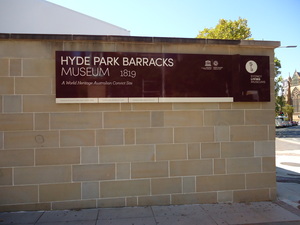 (photo by Jarek)
(photo by Jarek)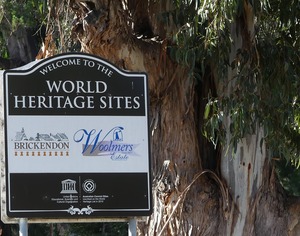 (photo by Clyde)
(photo by Clyde)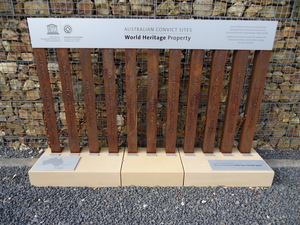 (photo by Jarek)
(photo by Jarek)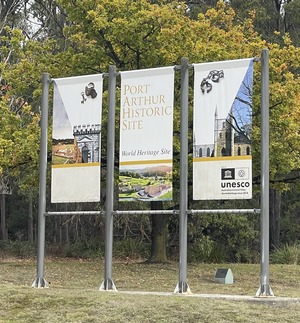 (photo by Bram de Bruin)
(photo by Bram de Bruin)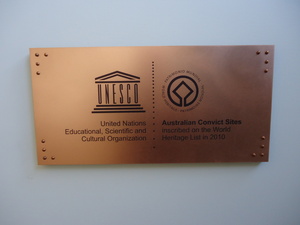 (photo by Jarek)
(photo by Jarek)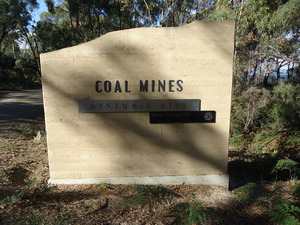 (photo by Jarek)
(photo by Jarek)